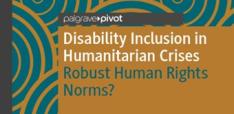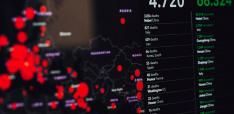State Responses to COVID-19: South Korea, Taiwan, and the Power of Strong Democracies

Caroline Tynan unpicks why South Korea and Taiwan has been so effective at countering COVID-19.
Since the outbreak of the global COVID-19 pandemic, challenges to democratic systems have come in many forms. By March, some were hailing the success of China, along with others in the region, in quickly containing the virus. This has been juxtaposed against the chaotic situation across Western democracies—most notably in the United States, which since April has the world’s greatest number of deaths, now totaling over 100,000. Although academics and policy analysts have been quick to note that an autocracy/democracy binary of regime type falls short in explaining varying levels of success in state responses to COVID-19, headlines continue to question the viability of democracies in responding to pandemics, especially when compared with China’s success so far in containing the virus. Importantly, even well-intentioned East-West binaries that risk simplistic conflation of South Korean and Taiwanese responses with those of China—or even softer authoritarian models like Singapore—pose a potentially problematic narrative that overlooks the universality of democracy as an instrumental value to states in responding to COVID-19.
Most East Asian states had first-hand experience in dealing with previous outbreaks of coronaviruses, but the initial responses to the arrival of COVID-19 indicate that only China stands out in its failure to learn from the past. Foremost among these is the significance of transparency, a lesson South Korea quickly learned after it failed to adequately inform its public about MERS in 2015, fostering a response that prioritized expertise over party loyalty in the selection of lead bureaucrats. Although China was able to contain the spread of the novel coronavirus fairly effectively after it had gone global, intentional state censorship delayed this containment, allowing the virus to begin to rapidly spread for weeks before its government publicly acknowledged its existence.
 Some might argue it is too easy to negatively evaluate efficacy of response in the state that was the initial source of the outbreak, as the Chinese government had to respond earlier than any other government. While this is a valid concern for evaluation of variations in state responses, it is not a defense for delayed reaction in China in 2019. China, like Taiwan, had firsthand experience dealing with an epidemic after the SARS outbreak in 2003. Yet, China did not respond preemptively to COVID-19 in the way that Taiwan did. From December 12 to 28, local disease control centers in China had recorded as many as 25 cases, but the outbreak was not reported to the central government until December 31. For the first half of January, local officials told doctors that cases had to be confirmed by city and province health authorities. On December 31 the Chinese government began to censor the existence of an outbreak from its public altogether. From January 22 to 28, as many as 254 citizens were penalized for ‘spreading rumors’ related to the disease. As late as March, it was still censoring some substantial reporting on the virus from its public. One study, which was co-authored by an expert from Wuhan’s municipal CDC, found that acting one week earlier in mid-January would have cut the number of infections by two-thirds. In other words, China possessed the expertise to deal with the crisis in its health care infrastructure, including at the level of local governance. The problem was not a lack of state capacity so much as one of political will.
Some might argue it is too easy to negatively evaluate efficacy of response in the state that was the initial source of the outbreak, as the Chinese government had to respond earlier than any other government. While this is a valid concern for evaluation of variations in state responses, it is not a defense for delayed reaction in China in 2019. China, like Taiwan, had firsthand experience dealing with an epidemic after the SARS outbreak in 2003. Yet, China did not respond preemptively to COVID-19 in the way that Taiwan did. From December 12 to 28, local disease control centers in China had recorded as many as 25 cases, but the outbreak was not reported to the central government until December 31. For the first half of January, local officials told doctors that cases had to be confirmed by city and province health authorities. On December 31 the Chinese government began to censor the existence of an outbreak from its public altogether. From January 22 to 28, as many as 254 citizens were penalized for ‘spreading rumors’ related to the disease. As late as March, it was still censoring some substantial reporting on the virus from its public. One study, which was co-authored by an expert from Wuhan’s municipal CDC, found that acting one week earlier in mid-January would have cut the number of infections by two-thirds. In other words, China possessed the expertise to deal with the crisis in its health care infrastructure, including at the level of local governance. The problem was not a lack of state capacity so much as one of political will.
In stark contrast, South Korea and Taiwan responded quickly and effectively. Taiwan prepared for the epidemic three weeks prior to its own first case. This included contacting the WHO for additional information on the new virus on December 31, 2019, as well as preparing health screenings, closely monitoring travelers and suspected cases, and conducting targeted contact tracing—all before a case presented on its shores. Taiwan has accrued only 426 cases, most traced to foreign travel, and with a total of only 6 deaths. While South Korea did not avoid an outbreak entirely, by acting quickly and efficiently, it rapidly turned around its outbreak, and like Taiwan, has been able to avoid a complete lockdown
Why was South Korea so effective?
Failings during the MERS outbreak in 2015 led South Korea to create a health response infrastructure with the means to rapidly develop a high degree of testing capacity in the first weeks of the COVID-19 outbreak in 2020. Within two weeks, thousands of testing kits were produced, as cases remained in the double digits. On February 29, its number of newly confirmed cases peaked at 909. Within just six days, however, this number was halved to 438 new cases on March 5. By March 9, this was halved again, to 248 cases. As of March 12, South Korea was testing 20,000 individuals a day, the highest per capita rate of testing anywhere in the world at the time. This number has since declined, as its number of cases and suspected cases has continued to drop. On April 15, 2020, the day of its elections, South Korea recorded a total of just 27 new cases.
Prior to the 2017 corruption scandal that precipitated her impeachment, South Korean President Park Geun-hye’s failures in response to the 2015 MERS epidemic had damaged public approval of the government. Citizens, politicians, the media, and the scientific community in South Korea all criticized the government for lack of transparency, as it initially withheld which hospitals had positive cases and details on the viral spread. The digital media platform The Pressian was the first to release to the public the list of South Korean hospitals with MERS positive cases. Opposition party head Moon Jae-in declared that the government’s failure had led to a loss of its trust by its citizens. In response to these criticisms, as well as the 38 deaths that MERS had caused, South Korea amended its Infectious Disease Control and Prevention Act to expand the authority of the health minister during such a pandemic and to ensure the citizenry’s ‘right to know’ the path of viral infection. Since 2015, the South Korean Center for Disease Control (KCDC) has also continuously increased its staffing and training in epidemiology, created specialized divisions for risk assessment, emergency operations, crisis communication, and partner coordination. And in 2017, that same opposition politician who had vocalized popular discontent in the government was voted in with historic voter turnout, winning by the largest margin of any president in the history of South Korean democracy.
Correspondingly, investigative journalism played an integral role in holding President Park responsible for the series of scandals in which she was involved from 2014 to 2017, including the public health crisis surrounding the MERS epidemic. This helps explain the findings of a strong growth in Koreans’ trust in the press in 2018, which came alongside a broader increase in public trust in an aggregate measure of institutions (government, the media, NGOs, and business). Among the general public, it grew from 38 in 2017 to 44 in 2018, and held constant for the informed public from 50 to 50. Since that time, measures of South Korean public trust in institutions indicate a continued upward trend. Fast forward to 2020, and during the first month of the COVID-19 pandemic, the KCDC held twice daily press briefings aimed at keeping the public informed of updates and the government’s response. This increased transparency with the press, along with the KCDC’s initiatives on educating the public on the virus and hygiene, combined with a massive rollout of information on testing and results, have all helped to keep misinformation on the pandemic and the state’s response to a minimum, reinforcing the effectiveness of South Korea’s handling of the pandemic.
Taiwan and countering misinformation
A similar trajectory can be seen in Taiwan, where different mechanisms of democracy have together facilitated effective responses to the dual challenges of misinformation and COVID-19. Before the virus had reached Taiwan, the government was seeking out information from the WHO while also combatting an intensified disinformation campaign from China aimed at its presidential election on January 11. Despite this, with voter turnout at 75%, President Tsai won by the largest margin of any president in Taiwan’s democratic history thus far. The surge in Chinese-led disinformation continued after the election and has since been focused on stoking panic around COVID-19, depicting the Taiwanese government as incompetent. Although COVID-19 has raised the stakes for this interrelated viral problem of misinformation, Taiwan’s government has impressively been able to effectively contain the damage from both.
Taiwan is one of only three countries ranked in the worst category for degree of foreign influence in dissemination of misinformation, but it is also ranked first in terms of the discrepancy between the problem it faces from foreign misinformation (very large) and its own role spreading misinformation within (relatively minimal). Similar to how its earlier confrontation with SARS conditioned Taiwan’s response to COVID-19, the threat from Chinese misinformation has led it to create one of the most diligent responses to the viral spread of misinformation. Established prior to COVID-19, a system of government coordination of fact-checking with civil society and tech companies has been essential in curbing COVID-19-related misinformation’s spread among the public while ensuring government transparency in dealing with the outbreak. Its Digital Minister Audrey Tang rapidly improved upon a citizen’s idea to create a real-time map of mask availability across stores nationwide. Tang is a tech entrepreneur who entered politics as part of the Sunflower protest movement that demanded greater transparency from the Taiwanese Parliament in 2014. Tang now coordinates government responses to misinformation with independent civil society organizations like the Taiwan FactChecker and the private sector, including Facebook and LINE. She argues that the immunization of democracies against misinformation is a process rooted in trust between state and society. If, for example, a user on the messaging app LINE comes across dubious information, that individual can submit it to be assessed by fact checking teams comprised of independent groups like Taiwan FactChecker as well as state officials. At the state level, friendly competition is encouraged across different government ministries to offer factual counters to false stories within one hour’s time, which are then dispersed through social media as well as the mainstream media. Tang describes this approach she has led the Taiwanese government towards as one of ‘radical transparency’ whereby the government views citizens as a ‘resource, not a liability’ in responding to COVID-19
Misinformation and mistrust in institutions
Misinformation and disinformation, the intentional spread of misinformation, thrive where transparency is poor and trust is weak. China’s initial information failure on COVID-19 reminds us of the intrinsic information dilemma of single-party dictatorships. It may have large state capacity to control information, but this seems to have failed to provide its bureaucrats the incentive to prioritize the collective good over party politics, from mid-December through January. Since taking swift action at the end of January, the Chinese government has nonetheless continued in its campaign of disinformation, switching from a deflecting of systemic failure onto its local governments to attributing blame to the US, including accusing the US army of creating the virus.
Problems with transparency have no doubt impeded progress against the virus in democracies, but those with the worst outcomes have leaders openly hostile to core democratic institutions. In Brazil, which now has the fastest growing number of cases, President Bolsonaro has used misinformation to systematically denigrate scientific expertise and refute the seriousness of the crisis. In the US, President Trump has denied reports of testing problems in hard hit states, falsely inflated the number of tests being done, claimed that tests were being performed to ensure the safety of travelers, reassured the public that his administration has ‘tremendous control over the virus’, and made such outrageous suggestions as advising people to inject disinfectants as a curative strategy. A recent study on misinformation in the US has revealed how an environment of disregard for accurately reported information can have direct ramifications for public health in the form of higher deaths from COVID-19.
The initial responses of Taiwan and South Korea exemplify a combination of top-down infrastructural power and bottom-up people power that has kept bureaucracies accountable and transparent. They have been the most effective in terms of initial and, to date, sustained containment of cases and deaths. Strong democracies in New Zealand, Iceland, and Germany have all likewise indicated resilience through government transparency and high testing capacity. In China, the president’s growing extension of power over its institutions has followed a global pattern of personalization of power that has come at the expense of checks on authority. It is no coincidence that the COVID-19 hotspots of Brazil and the US are led by presidents who regularly denigrate their own democratic institutions and scientific expertise. They would do well to heed the lessons of variation in responses on the other side of the world. As South Korea’s learning from its transparency failures in 2015 and power transition in 2017 showed, the greatest strength of democracy is its ability to revise itself.
Points of reflection
In the 1990s, Development economist Amartya Sen challenged then-Singaporean Prime Minister Lee Kuan Yew’s defense of authoritarianism, which Lee cited as a primordial trait of the region in which ‘Asian values’ are centered on the collective over the individual. Sen argued that democracy is a universal value that enables effective state response, citing the example of India, which saw famine all but disappear with the establishment of a multiparty democracy and a free press in 1947. Sen’s case that individual liberties and the collective good are not mutually exclusive but rather reinforcing continues to be an important frame for assessing democratic strength. China, Singapore, South Korea, and Taiwan may all be, on a global scale, relatively high-capacity states, with significant levels of infrastructural power over their populations to stop the spread of a pandemic. Yet, over the last five months, there has been substantial variation in their levels of success in containing COVID-19. The relatively greater success of Taiwan and South Korea is not coincidental to their status as democracies, but, is a function of the relationship between state capacity and traits intrinsic to high-functioning democracies: transparency and accountability.
Broadly speaking, liberal democracies are political regimes that sufficiently satisfy criteria in the two main components of a full democracy: individual liberties, including freedom of expression and equality before the law, and popular will—namely, the ability to vote in free and fair elections. State capacity is in many ways a more encompassing concept. While theoretically well understood, it lacks a systematic measure used as widely as, for example, Freedom House scores on political rights and civil liberties. Nonetheless, it can likewise be broken down into two, interrelated, key components: infrastructural power, or the reach of state power that makes society legible to the state, and the Weberian concept of a rational, professionalized bureaucracy. Infrastructural power is manifest in state extractive, coercive, and administrative capacities—the ability to tax, to maintain physical control over a given territory, and to effectively deliver public goods and services. Just as civil liberties are crucial for free and fair elections, so is state infrastructural power a necessary condition for a professional bureaucracy. The necessity of having developed such top-down extractive capacities as taxation and conscription for state development are well understood. Yet, they alone are not sufficient conditions for optimal state capacity. For example, adequately high civil service pay, enabled by sufficient state revenue, does not by itself deter corruption. Scholarly research on this indicates that transparency, accountability, and equal opportunities must be enhanced as well. In order for state bureaucratic administrative capacity to function professionally and impartially, states require bottom-up mechanisms ensuring accountability and information sharing, in tandem with top-down extractive capacities.
Authoritarian regimes, like democracies, vary in terms of capacity, as well as legitimation strategies and degrees of civil society freedoms. Many, for example, allow elections and certain levels of press freedom as crucial mechanisms of information delivery to the regime. Certain democratic characteristics, in other words, may exist as regime survival strategies. While success against COVID-19 has varied across autocracies as it has across democracies, nowhere have authoritarian characteristics been productive in sustaining containment. Take Singapore and Malaysia, both strong states with hybrid authoritarian regimes—that is, they have each been dominated by a single party since independence, but also have considerably greater civil liberties than, for example, China, as well as some institutionalized political contestation. In Singapore, which scores among the highest in state provision of public services, initial successes in combating the pandemic have faltered due to its government’s overlooked accountability gap to its sizable migrant worker population. Malaysia, which currently has a resurgence of cases, had dismissed early warnings from journalists and others as ‘fake news’. Its arrests of over 15,000 lockdown violators further reveals the potential perils of government repression to public health. Meanwhile, China, which scores above average in state provision, according to the Fragile States Index, and has seen success in poverty reduction and economic development in recent decades, still struggled for over one month to take action against the virus. For states to succeed in containing a threat so contagious and pervasive as COVID-19, a robust state accountability to its society is more important than ever before, an example that both South Korea and Taiwan have clearly demonstrated.
Caroline Tynan is ACLS/Mellon Postdoctoral fellow at the Committee to Protect Journalists. These are the sole views of the author and do not reflect any organizational affiliations.
Photo by Anna Shvets from Pexels


